Feb. 7 update on COVID-19 in MN: 10 percent of Minnesotans have at least one vaccine dose

Go Deeper.
Create an account or log in to save stories.
Like this?
Thanks for liking this story! We have added it to a list of your favorite stories.
3 things to know:
About 10 percent of Minnesotans have received at least one vaccine dose
Key COVID-19 metrics holding steady in the state
Officials caution against attending big Super Bowl parties
About 10 percent of Minnesota residents have now received at least the first dose of a COVID-19 vaccine.
The state reached that milestone in Sunday's update from Minnesota Department of Health, reflecting data reported as of Friday. That's just over 554,000 people. About 2.8 percent of Minnesotans — nearly 157,000 people — have received both doses to complete their vaccination.
And the state is slowly making progress in vaccinating people age 65 and older. Just over 27 percent of that age group in Minnesota have now received at least one dose of the vaccine.
But week-over-week, the pace of vaccinations in Minnesota in recent days is falling short. The state reported more than 43,000 doses administered in its updates each day the previous weekend, Jan. 30-31.
Turn Up Your Support
MPR News helps you turn down the noise and build shared understanding. Turn up your support for this public resource and keep trusted journalism accessible to all.
This weekend, the state reported 36,502 doses (Saturday's update) and 38,183 (Sunday).
At the current rate, officials estimate it could take four months to vaccinate all Minnesotans 65 and older.
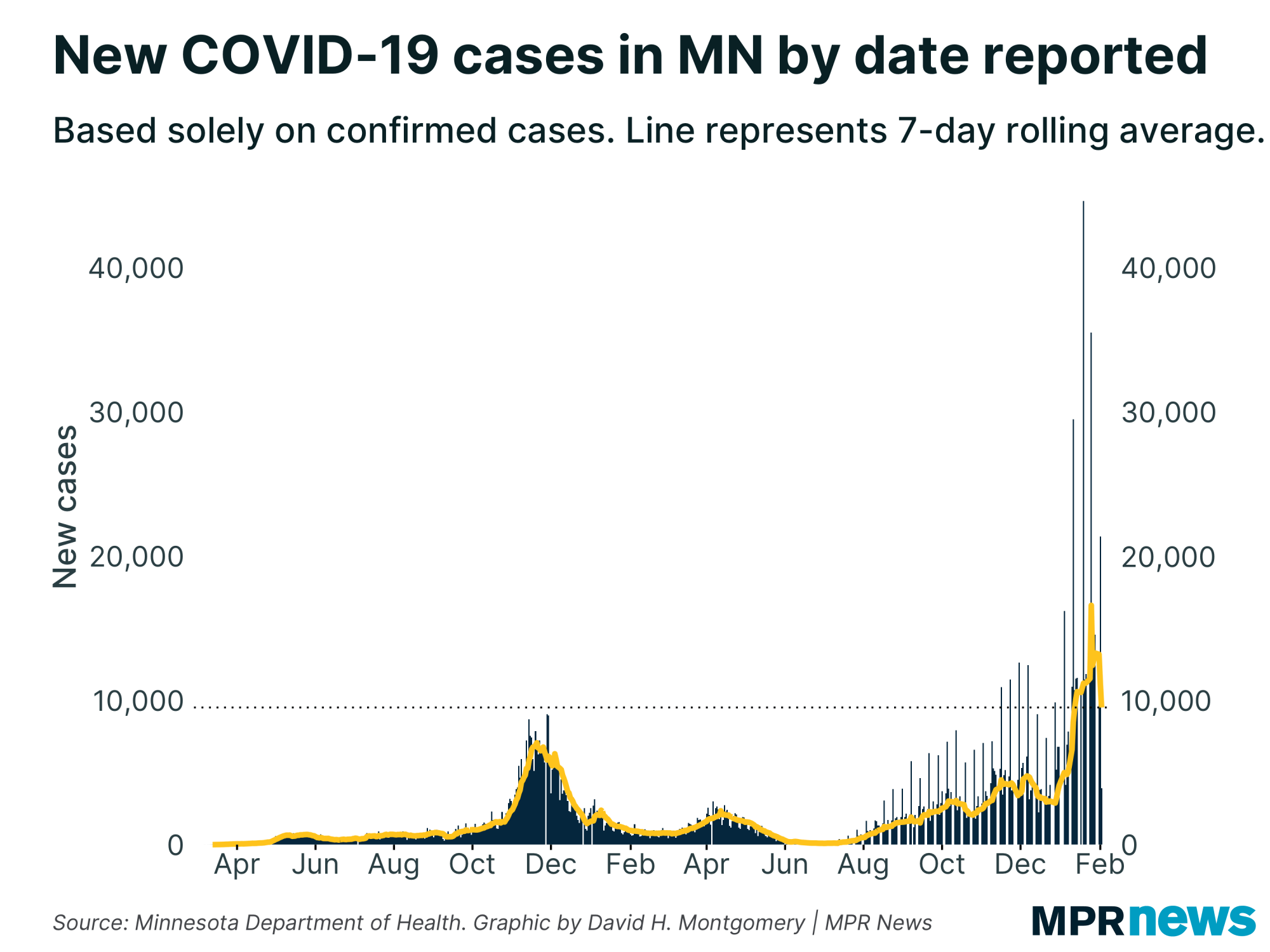
Here are Minnesota’s current COVID-19 statistics:
6,299 deaths (10 new)
468,118 positive cases (914 new), 453,225 off isolation (97 percent)
6.8 million tests, 3.3 million Minnesotans tested (about 58 percent of the population)
10 percent of Minnesotans vaccinated with at least one dose
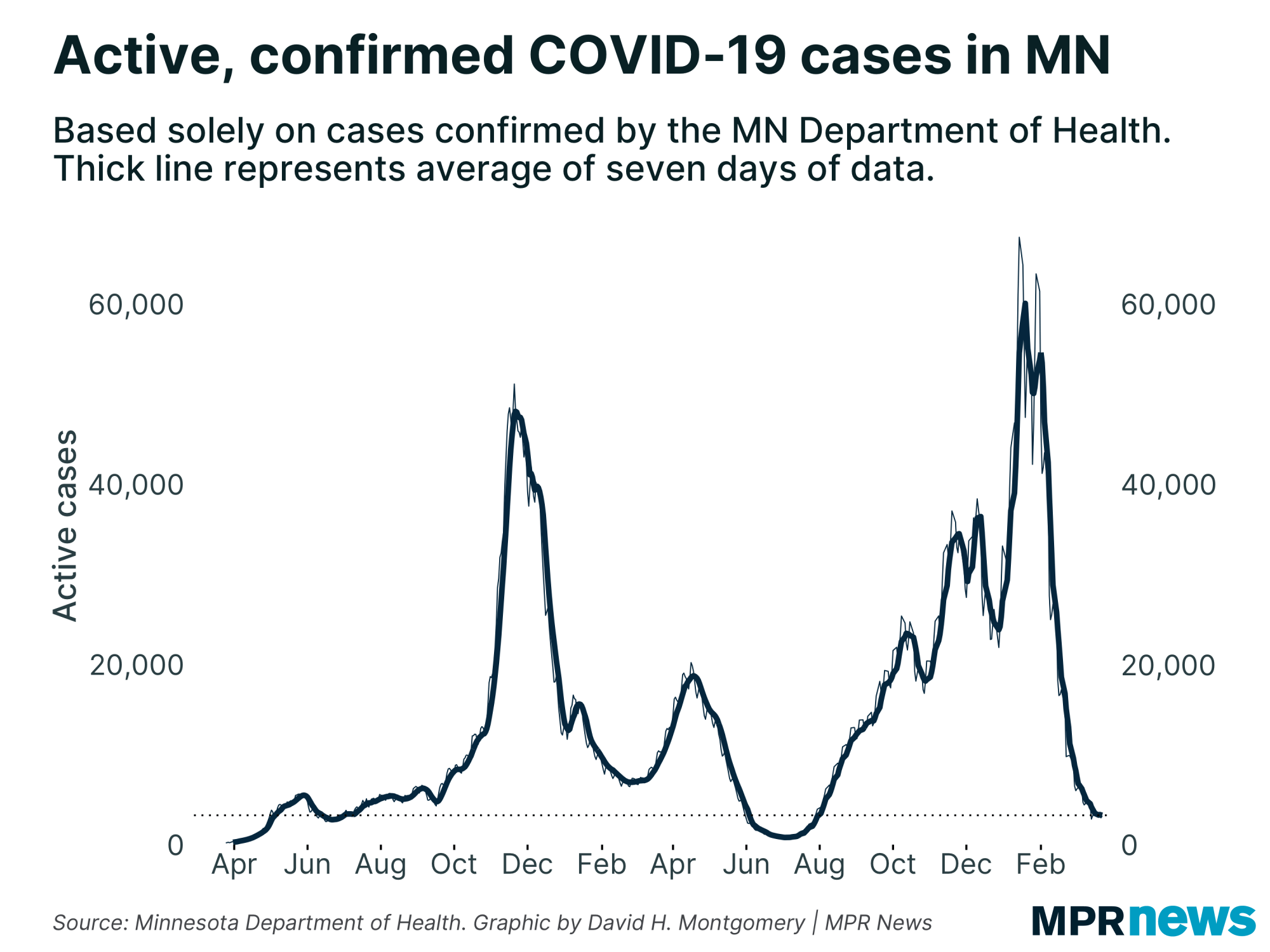
Pandemic picture holds steady, mostly positive
COVID-19 metrics continue to show Minnesota holding its own, at levels of new cases, hospital admissions and deaths at their lowest point since last fall.
Known, active cases stand at 8,594, similar to early October levels and still down significantly from around 50,000 in late November.
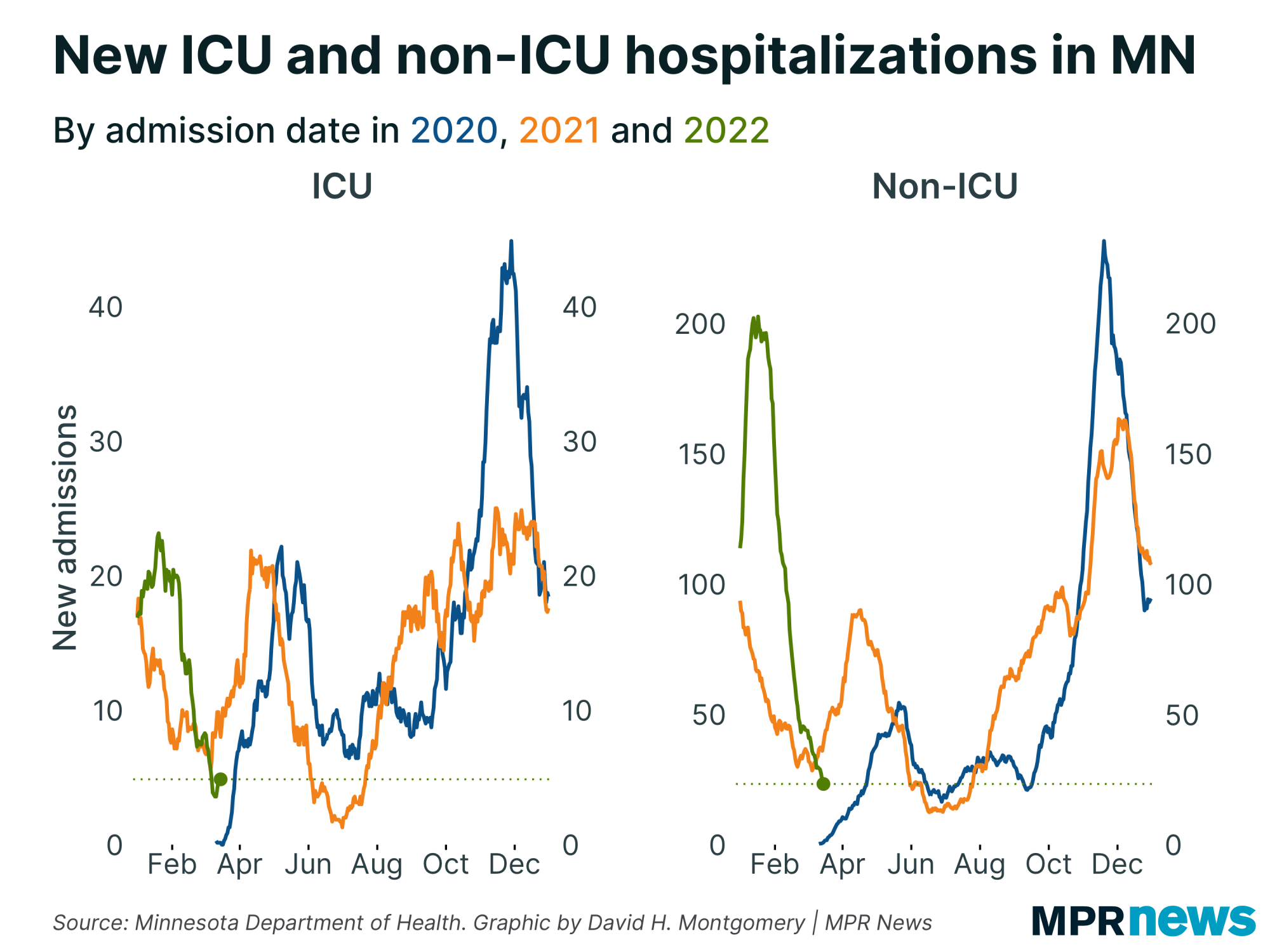
Ten newly reported deaths raised Minnesota’s toll to 6,299 on Sunday. Among those who’ve died, about 63 percent had been living in long-term care or assisted living facilities; most had underlying health problems.
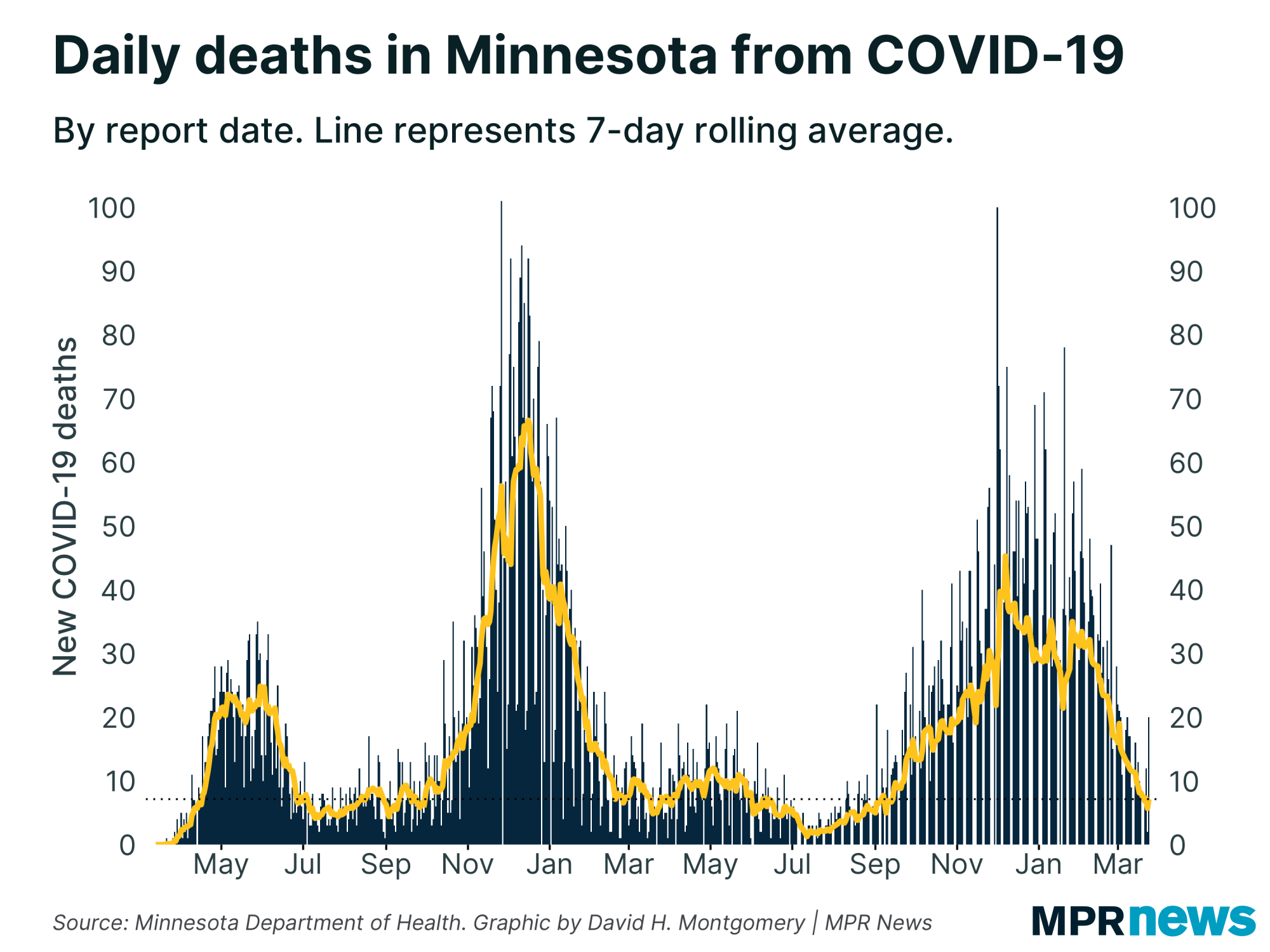
The state has recorded 468,118 total confirmed or probable cases so far in the pandemic, including 914 reported Saturday. About 97 percent of Minnesotans known to be infected with COVID-19 in the pandemic have recovered to the point they no longer need to be isolated.
State officials continue to caution that the pandemic is not over yet, noting the new virus strains arriving in the United States, including including two cases of the Brazilian strain and 16 of the U.K. variant in Minnesota.
They’re also trying to dissuade people from attending big Super Bowl gatherings on Sunday given the ongoing worries about spreading the virus.
Cases spread across age groups, regions
People in their 20s still make up the age bracket with the state’s largest number of confirmed cases — nearly 89,000 since the pandemic began, including nearly 47,000 among people ages 20 to 24.
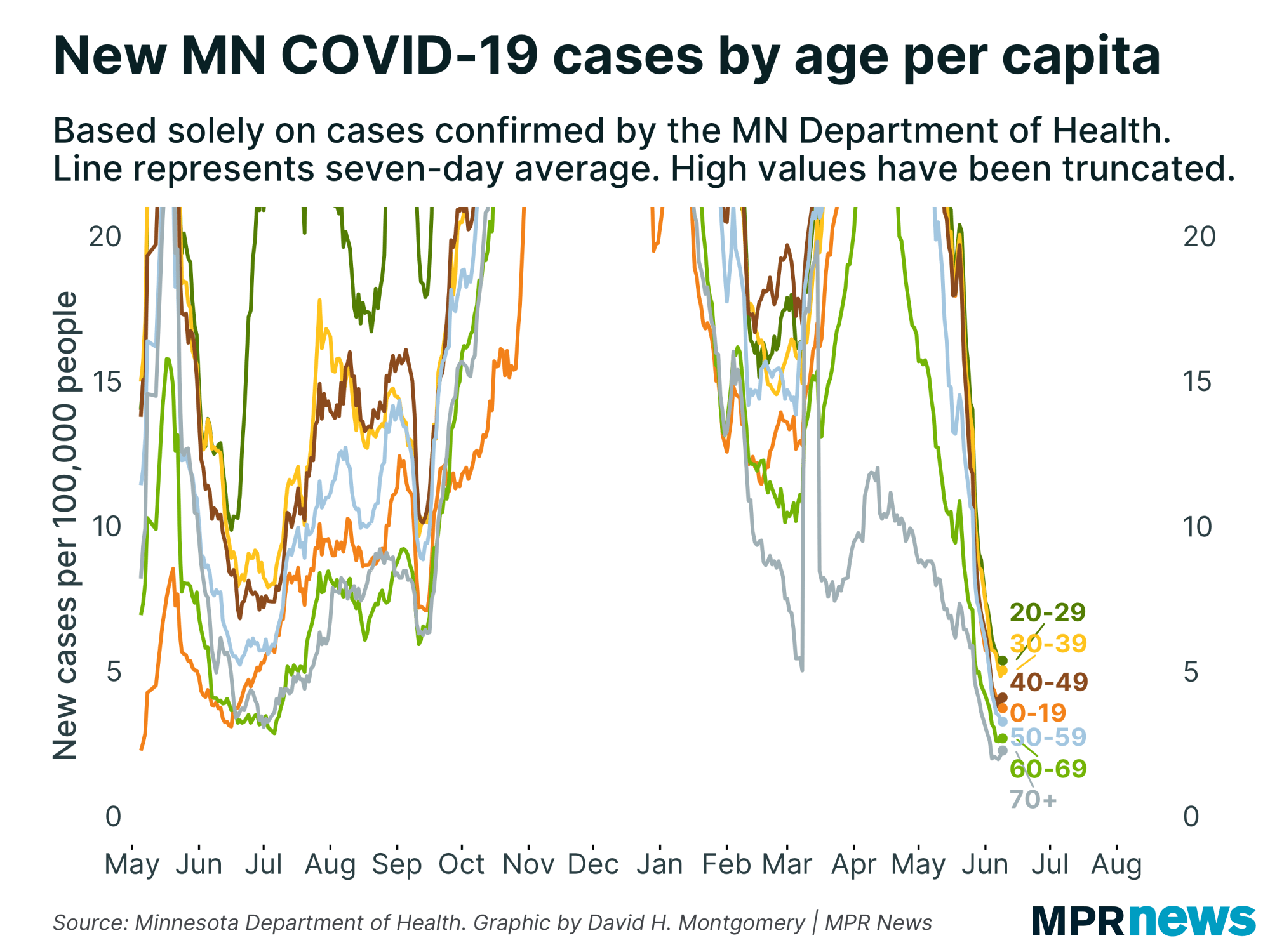
The number of high school-age youth confirmed with the disease has also grown, with more than 36,000 total cases among those ages 15 to 19 since the pandemic began.
Although less likely to feel the worst effects of the disease and end up hospitalized, experts worry youth and young adults will spread it unknowingly to older relatives and members of other vulnerable populations.
People can have the coronavirus and spread COVID-19 when they don’t have symptoms.
Caseloads are trending down across all regions of the state following a late December, early January blip.
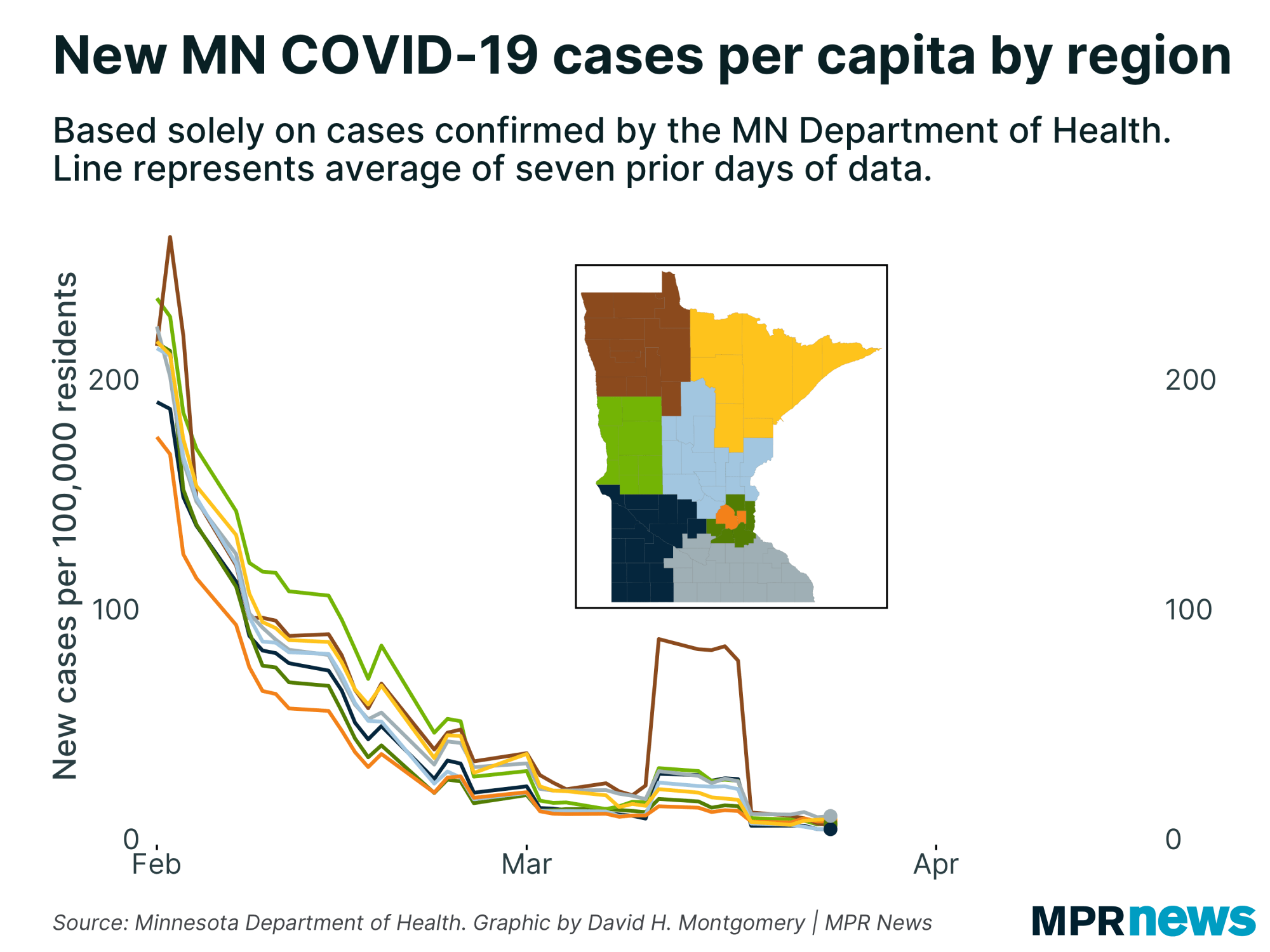
Caseloads still heaviest among people of color
In Minnesota and across the country, COVID-19 has hit communities of color disproportionately hard in both cases and deaths. That’s been especially true for Minnesotans of Hispanic descent for much of the pandemic.
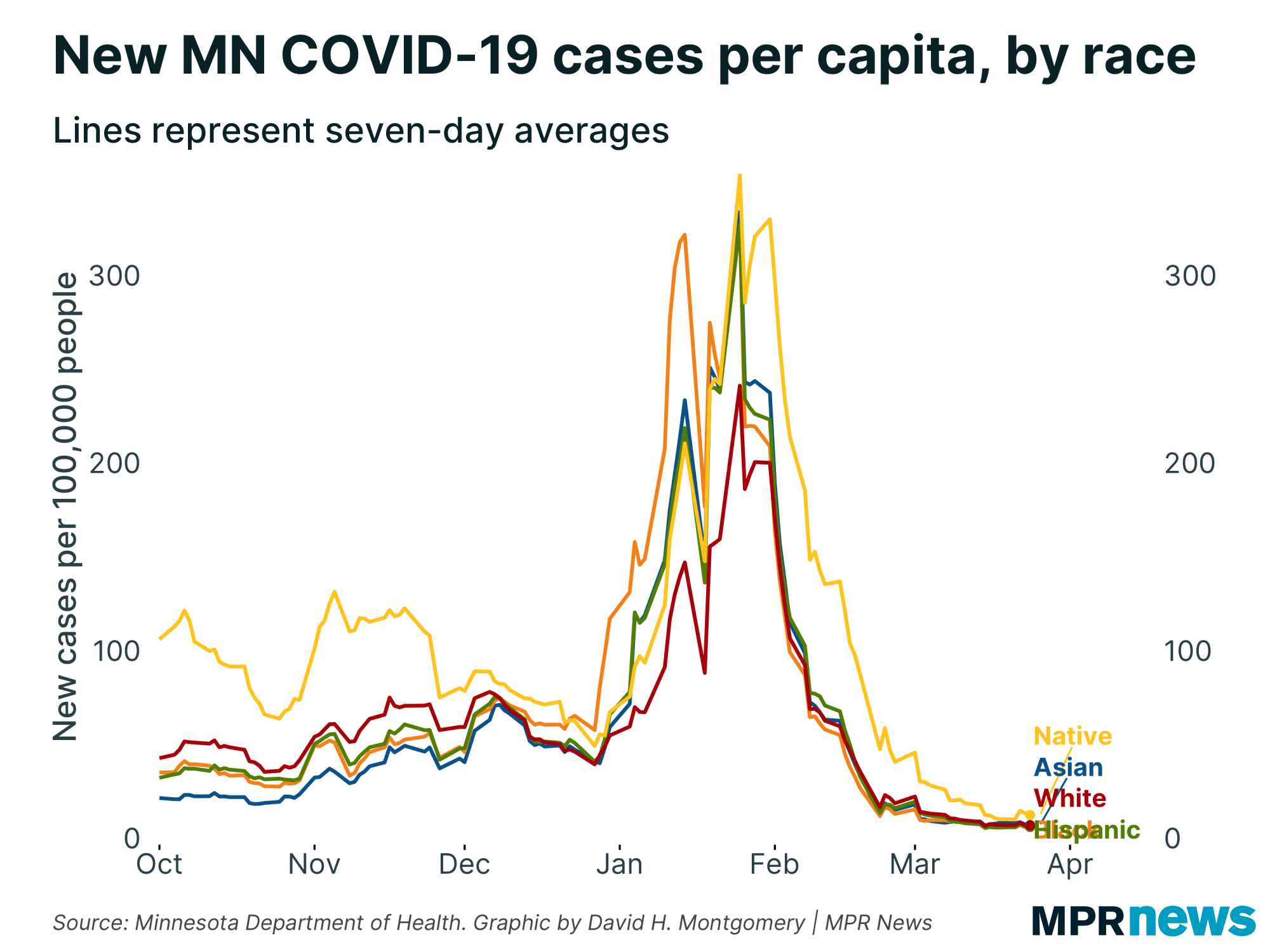
Even as new case counts continue to fall from their late November, early December peaks, the data shows people of color continue to be hit hardest.
Distrust of the government, together with deeply rooted health and economic disparities, have hampered efforts to boost testing among communities of color, officials say, especially among unauthorized immigrants who fear their personal information may be used to deport them.
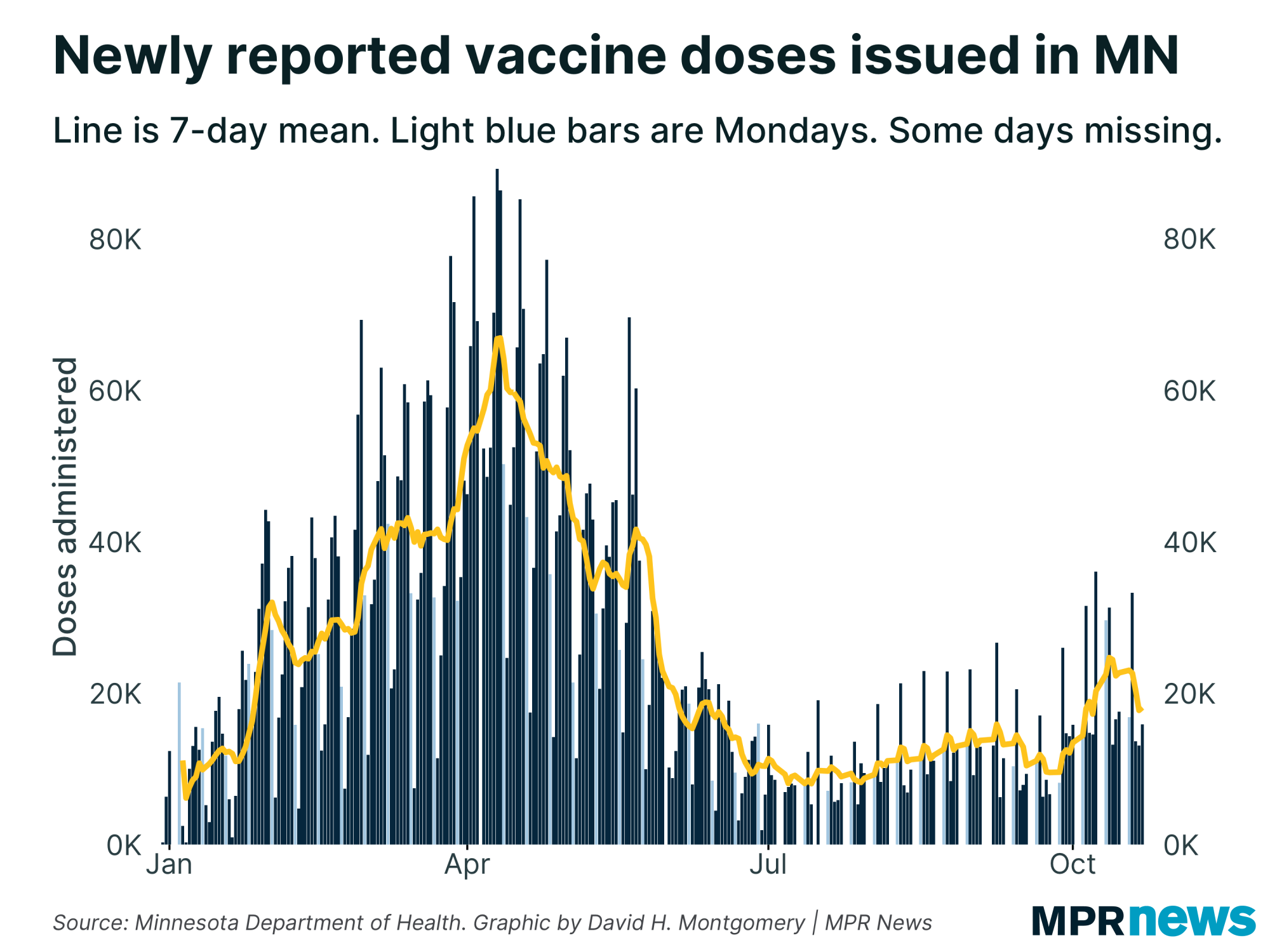
‘Everyone is going to have to be patient’
State public health leaders have been pleading for patience over the pace of COVID-19 vaccinations.
More than 554,000 Minnesotans received at least one dose of COVID-19 vaccine as of Sunday’s report, which included data through Friday. That’s about 10 percent of the state’s population. About 2.8 percent had completed a full vaccine series.
Concerns continue to simmer over the speed of the effort — and the confusion it’s generated as people struggle to find out when and where they can get a shot.
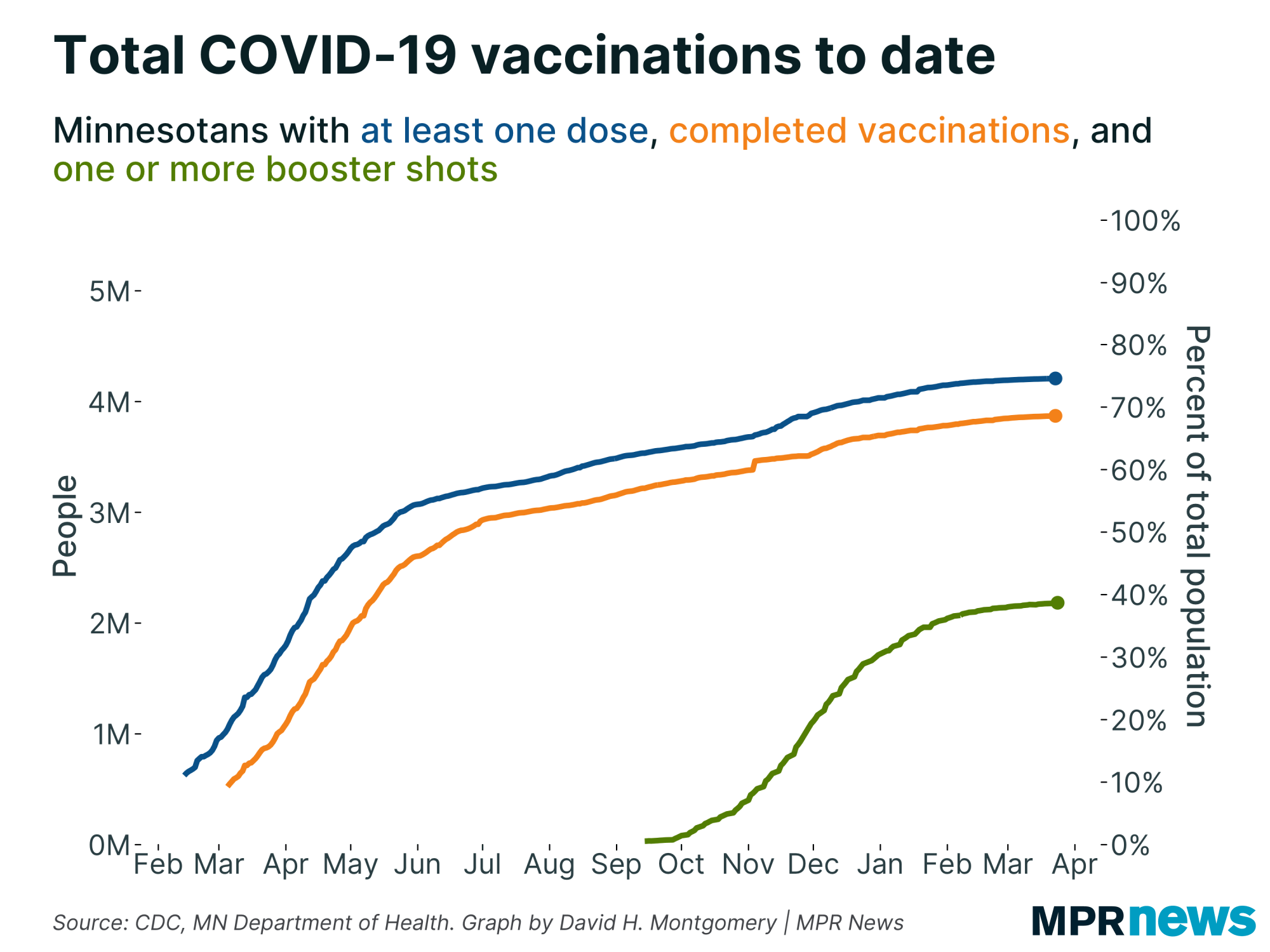
Last week, officials said it could take up to four months to vaccinate Minnesotans 65 and older if the feds don’t deliver more vaccine faster; about 20 percent of that priority population has received at least their first dose.
“We are getting Minnesotans vaccinated safely and quickly as supplies come to us,” Kris Ehresmann, the state’s infectious disease director, told reporters Tuesday. But “we just don’t have enough vaccine and everyone is going to have to be patient.”
Minnesota’s getting some 84,000 more doses this week, which will be shared among tribal nations, people over age 65, educators, group home residents and others.

Nearly half will go to health care workers who have yet to be vaccinated even though they’re in a high-priority category, Ehresmann said earlier this week, estimating about 80,000 state health care workers have yet to be vaccinated.
COVID-19 in Minnesota
Data in these graphs are based on the Minnesota Department of Health's cumulative totals released at 11 a.m. daily. You can find more detailed statistics on COVID-19 at the Health Department website.
Latest developments
Vaccination weekend set for Minneapolis Convention Center
The state of Minnesota has launched a new, large-scale vaccination site at the Minneapolis Convention Center.
The state expects to vaccinate 9,500 people, including people 65 and older, teachers and child care providers through the weekend. Additional sites are opening in Duluth and southern Minnesota in coming days, and will remain open indefinitely.
The sites will be operated by Vault Health, which runs the state's saliva testing program.
Dan Feehan, a former Minnesota congressional candidate, is now leading Vault's national vaccine program, including in Minnesota.
"This is incredibly exciting. People are waiting and people are looking for an opportunity like this: Not just to get their vaccination, but to get it easily, efficiently and at a high enough throughput so we can get to a lot more people,” he said.
Vault Health randomly drew names for appointments from a list of people who preregistered for slots during the initial rollout of the vaccine pilot program in January, Feehan said.
— Catharine Richert | MPR News
Top headlines
Minnesota hospitals say state's vaccine distribution is at 'untenable crossroads': In a letter to the Minnesota Department of Health, a coalition of Minnesota’s hospitals say the state’s vaccine distribution system is inequitable, leaving some clinics and hospitals without doses to give to older, vulnerable patients.
Amid huge demand, food shelves urge people to seek help: One of the nation’s largest food banks — Minnesota-based Second Harvest Heartland — says it's seeing huge demand for its services amid the pandemic. And it’s urging people in need to go to a food shelf.
Far-flung actors, crew unite for Theater Mu’s new show: After months of planning and with pandemic restrictions still in place, Theater Mu in St. Paul will launch its mainstage season on Saturday with a new production merging theater and film — a play that’s designed for, and speaks to, the times we’re living in.



